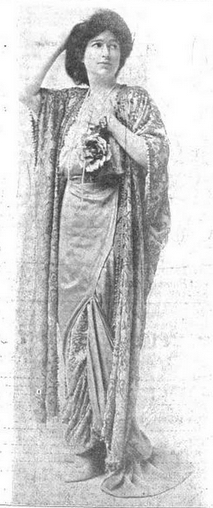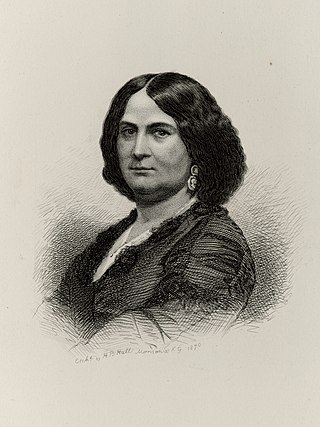
Otto Abels Harbach, born Otto Abels Hauerbach was an American lyricist and librettist of nearly 50 musical comedies and operettas. Harbach collaborated as lyricist or librettist with many of the leading Broadway composers of the early 20th century, including Jerome Kern, Louis Hirsch, Herbert Stothart, Vincent Youmans, George Gershwin, and Sigmund Romberg. Harbach believed that music, lyrics, and story should be closely connected, and, as Oscar Hammerstein II's mentor, he encouraged Hammerstein to write musicals in this manner. Harbach is considered one of the first great Broadway lyricists, and he helped raise the status of the lyricist in an age more concerned with music, spectacle, and stars. Some of his more famous lyrics are "Smoke Gets in Your Eyes", "Indian Love Call" and "Cuddle up a Little Closer, Lovey Mine".

Julian Eltinge, born William Julian Dalton, was an American stage and film actor and female impersonator. After appearing in the Boston Cadets Revue at the age of ten in feminine garb, Eltinge garnered notice from other producers and made his first appearance on Broadway in 1904. As his star began to rise, he appeared in vaudeville and toured Europe and the United States, even giving a command performance before King Edward VII. Eltinge appeared in a series of musical comedies written specifically for his talents starting in 1910 with The Fascinating Widow, returning to vaudeville in 1918. His popularity soon earned him the moniker "Mr. Lillian Russell" for the popular beauty and musical comedy star.

The Gerald Schoenfeld Theatre, formerly the Plymouth Theatre, is a Broadway theater at 236 West 45th Street in the Theater District of Midtown Manhattan in New York City. Opened in 1917, the theater was designed by Herbert J. Krapp and was built for the Shubert brothers. The Schoenfeld Theatre is named for Gerald Schoenfeld, longtime president of the Shubert Organization, which operates the theater. It has 1,079 seats across two levels. Both the facade and the auditorium interior are New York City landmarks.

The Princess Theatre was a joint venture between the Shubert Brothers, producer Ray Comstock, theatrical agent Elisabeth Marbury and actor-director Holbrook Blinn. Built on a narrow slice of land located at 104–106 West 39th Street, just off Sixth Avenue in New York City, and seating just 299 people, it was one of the smallest Broadway theatres when it opened in early 1913. The architect was William A. Swasey, who designed the Winter Garden Theatre two years earlier.

Harold George Bryant Davenport was an American film and stage actor who worked in show business from the age of six until his death. After a long and prolific Broadway career, he came to Hollywood in the 1930s, where he often played grandfathers, judges, doctors, and ministers. His roles include Dr. Meade in Gone with the Wind (1939) and Grandpa in Meet Me in St. Louis (1944). Bette Davis once called Davenport "without a doubt [. . .] the greatest character actor of all time."

Wise Child is a 1967 play by English playwright Simon Gray.

John Grant Mitchell Jr. was an American actor. He appeared on Broadway from 1902 to 1939 and appeared in more than 125 films between 1930 and 1948.

Colin Keith-Johnston was a British actor.

Florence Reed was an American stage and film actress. She is remembered for several outstanding stage productions, including The Shanghai Gesture, The Lullaby, The Yellow Ticket and The Wanderer. Her best remembered movie role was as Miss Havisham in the 1934 production of Great Expectations. In this version, however, Miss Havisham was changed from a completely insane woman to an eccentric, who did not wear her wedding veil constantly, and who dies peacefully rather than as a result of suffering burns in a fire. In the 1950s Reed performed in several early television shows, such as The Philco Television Playhouse, Kraft Television Theatre and The United States Steel Hour. She is a member of the American Theater Hall of Fame.

Oh, Lady! Lady!! is a musical with music by Jerome Kern, a book by Guy Bolton and P. G. Wodehouse and lyrics by Wodehouse. It was written for the Princess Theatre on Broadway, where it played in 1918 and ran for 219 performances. The story concerns an engaged young man, Bill, whose ex-fiancée arrives unexpectedly on his wedding day. Bill works to convince his old flame that he was not worthy to marry her, but his clumsy efforts do not make him look good to his new fiancée, whose mother already dislikes Bill. A couple of crooks cause further complications.

Leave It to Jane is a musical in two acts, with music by Jerome Kern and book and lyrics by Guy Bolton and P. G. Wodehouse, based on the 1904 play The College Widow, by George Ade. The story concerns the football rivalry between Atwater College and Bingham College, and satirizes college life in a Midwestern U.S. town. A star halfback, Billy, forsakes his father's alma mater, Bingham, to play at Atwater, to be near the seductive Jane, the daughter of Atwater's president.

A Tailor Made Man is a 1931 American MGM pre-Code comedy film directed by Sam Wood. Adapted from the 1908 Hungarian play A Szerencse Fia by Gábor Drégely, the film stars William Haines and Dorothy Jordan.

Shelley Vaughan Hull was an American stage actor who also appeared in two silent motion pictures. His Broadway popularity as a suave handsome leading man was continually on the rise until his early death at age 34 in the Influenza pandemic of 1918.

A Tailor-Made Man is a 1922 American comedy silent film directed by Joe De Grasse and written by Albert Ray. The film stars Charles Ray, Tom Ricketts, Ethel Grandin, Victor Potel, Stanton Heck, Edythe Chapman, and Irene. The film was released on August 5, 1922, by United Artists. It is not known whether the film currently survives.

A Parisian Model is a 1906 Edwardian musical comedy with music by Max Hoffman, Sr. to a book and lyrics by Harry B. Smith. The story concerns a dressmaker's model who comes into a fortune. It opened on Broadway in 1906, ran with success and toured. It was produced by Frank McKee and Florenz Ziegfeld Jr., and starred Anna Held, Ziegfeld's common law wife. Soon after the success of this piece, Ziegfeld would launch his famous series of Ziegfeld Follies revues.

Roi Cooper Megrue was an American playwright, producer, and director active on Broadway from 1914 to 1921.

The Earl Carroll Vanities was a Broadway revue that Earl Carroll presented in the 1920s and early 1930s. Carroll and his show were sometimes controversial.

The First Year is a 1920 American comedic play written by Frank Craven, and produced by John Golden and directed by Winchell Smith on Broadway. It was a hit on Broadway, running for 729 performances.

Mary Aline Langdon McDermott was an American actress. She created the role of Mrs. Lily Mortar in the original Broadway production of Lillian Hellman's The Children's Hour (1934). She was also in the original Broadway cast of Thornton Wilder's Our Town (1938).

Mary Stevenson, known professionally as Mary Gannon, was an American actress who had an active stage career in comedies and vaudeville during the mid 19th century. A gifted comedienne, she became associated with many of the matron roles of 18th and 19th century comedies. Shortly before her death at the age of 39, New York theatre critic Joseph N. Ireland wrote of Gannon, "[she] is now universally acknowledged to be the best general comic actress in the city."




















